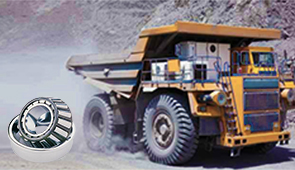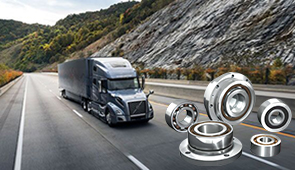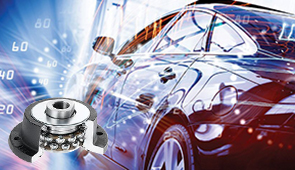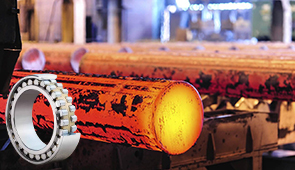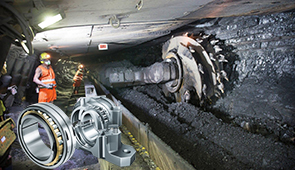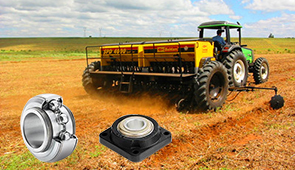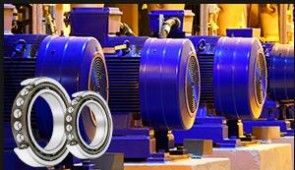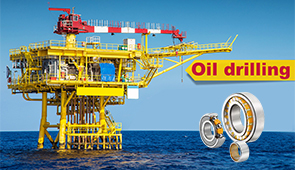Understanding Roller Cam Followers: Advantages and Applications in Engine Bearings
Roller cam followers are pivotal components in modern engine systems, designed to optimize performance and ensure durability under high-stress operating conditions. Engine bearings, in particular, rely on these precision-engineered devices to translate rotary motion into smooth, continuous linear movement. This article explores the technical advantages of roller cam followers, including their superior load-bearing capabilities, reduced friction, and enhanced longevity compared to other cam follower designs. Additionally, it examines their critical applications within engine bearings, highlighting how they contribute to improved engine efficiency and reliability. Whether you’re an engineer, mechanic, or enthusiast, understanding the role of roller cam followers is essential for gaining deeper insights into advanced engine mechanics and overall system performance.
What is a Roller Cam Follower?
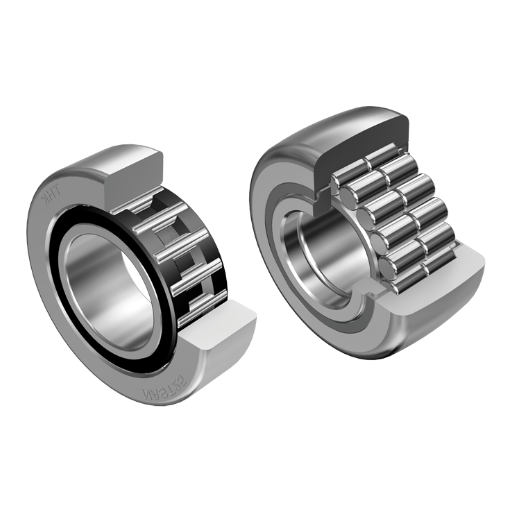
Definition and Functionality
A roller cam follower is a mechanical element designed to perform the conversion of rotary motion into linear motion or support linear motion along a guided path with high accuracy. It has a rolling element, preferably a cylindrical roller, which greatly reduces friction by replacing sliding contact with rolling contact. Therefore, such a design would be useful in those applications that have to bear heavy forces or speeds and need to be durable with reduced heat generation in the process.
Operation-wise, roller cam followers follow the motion of the cam profile that dictates the pattern of motion for the follower. They sit atop either a stationary or moving surface, so forces can be transmitted through the action of the cam. The combination of small size and roller action permits roller cam followers to support very heavy loads while still faithfully transmitting motion and loading, making them extremely useful when accurate motion and load bearing are required.
Roller cam followers find application in engine mechanisms, conveyor systems, and other material-handling equipment. In an internal combustion engine, these elements act like the very precise intermediaries that facilitate smooth and accurate transfer of motion from the camshaft to associated engine components to enhance the performance and minimize premature wear. Their operation and application form the foundation for developing systems involving fast and efficient motion transfer.
Components of Roller Cam Followers
The roller cams consist of several principal parts that ensure smooth and reliable motion transfer. The foremost part-the outer roller-is usually made from hardened steel and comes into direct contact with the cam surface. With its grinding-and-polished-smooth surface, friction is kept to a bare minimum, and this imparts wear resistance during operation. Inside the outer roller, a precision needle bearing or cylindrical roller bearing rotates to minimize friction losses, adequately handling high loads, and creating a safe environment for the operation of the follower.
Another part that is very important in the roller cam follower mechanism is the shaft or stud, which acts as a central support. Usually, a stud is made from tough heat-treated materials to withstand continuous stress. A stud is usually threaded at one end for mounting purposes so that the roller cam follower will be in proper alignment with respect to the rest of the system under operation.
Sealing and lubrication systems are available to maintain the performance and increase the lifespan of these mechanisms. The finest seals keep contaminants such as dust or debris away from internal components while keeping lubricant inside. Such lubrication arrangements, combined with grease or occasionally oil, are vital to ensure smooth movement and keep the system from overheating or excessive wear under high-speed or high-load circumstances. Hence, these components permit roller cam followers to work efficiently in different mechanical systems.
Advantages of Using Roller Cam Followers
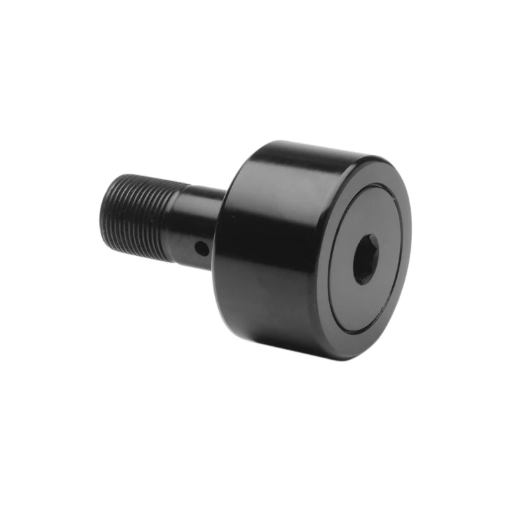
Enhanced Durability and Longevity
Roller cam followers are designed for durability and extended service life, especially in challenging mechanical applications. The sturdy construction can sustain high radial loads and axial forces without deforming or being damaged. Since the roller cam followers have hardened outer rings and well-machined components, they show very little wear and have a long life. The roller cam followers are also fitted with better seals to guard against contaminants like dirt and moisture, a step crucial to ensure consistent performance when in the field, where contaminant ingress could be disastrous.
Another factor contributing to the life expectancy of roller cam followers is having the best possible load distribution. Because of the rolling action, roller-type cam followers experience less contact stress between the moving parts than plain cam followers, which is another wear factor leading to early failure of these components, particularly where the machinery is in operations of a continuous or repetitive nature. A number of test scenarios have revealed that roller cam followers can withstand operational cycles far over those endured by the other type, thus proving their efficacy for long-term applications.
In the recent past, the advances in materials technology have extended the service life of modern roller cam followers even further. With the introduction of new-generation materials, including alloy steels, ceramic coatings, and lubrication systems, great advances have been made in resistance to fatigue and thermal degradation. Real-life applications found in automotive manufacturing and aerospace engineering show that significant cost savings are achieved as a result of decreased maintenance and failure rates when roller cam followers are used instead of the conventional ones. These measurable benefits cement their position as the ideal candidates for premium-grade mechanical arrangements.
Reduced Friction and Wear
The friction phenomenon is reduced in roller cam followers as compared with flat tappets that create friction by sliding contact; rolling elements such as cylindrical roller bearings and needle rollers are incorporated to reduce frictional losses during the operational cycle. Reduced friction, in turn, brings about increased mechanical efficiency, lower energy dissipation as heat through the interaction of the cam and follower. Contemporary research has shown that roller cam followers are in a state of 30% friction-energy loss at least, thereby making them suitable where ultimate efficiency and long running cycles are demanded.
High friction levels entail increased wear on the important elements of the system and thus reduce the service life of the camshaft and follower. Excessive wear caused by sliding systems will eventually bring the surface finish to the point where dimensional inaccuracies develop, culminating in mechanical system failure. Roller cam follower induce lesser risks of their failure by distributing contact stresses evenly across their rolling surfaces, thus preventing highly localized wear patterns. These components are usually surface-hardened by carburizing or nitriding to increase the hardness and wear resistance of the components; this treatment provides an extra margin of durability in high-load applications.
Laboratory and field testing have always substantiated the continual superiority of roller cam followers. For example, the use of roller followers in high-speed automotive engine applications maintained near-ideal lubrication conditions and greatly extended material fatigue life. Comparative studies with flat alternatives have abundantly testified to a reduction in maintenance and failures in roller applications. The above benefits constitute a crucial yardstick by which to assess the advancement of machinery performance under severe mechanical load.
Improved Performance in Engine Applications
Since the roller followers first entered the engines, the performance and reliability have been improved. Roller followers reduce mechanical wear under operating loads and thermal stresses by minimizing friction between moving parts in an environment of high thermal load and friction. This friction reduction further increases the wearable life of engine components and enhances system efficiency towards creating more fuel economy and thus lesser emissions.
From an engineering perspective, the rollers keep contact patterns and loads across moving surfaces more evenly than do flat tappets. Hence, precision leads to high operational stability, especially in extreme test conditions involving high temperatures and speeds. Another aspect is that roller followers also tend to retain lubrication better and thus reduce the risk of lubricant film breakdown, which results in accelerated wear and premature failures in engine components.
The benefits offered by roller followers render them an immediate necessity in modern engine applications. They are used in commercial and industrial machinery fairly well because they help to reduce material fatigue, increase maintenance intervals, and meet demanding performance requirements. Backed by empirical evidence and thorough engineering assessments, their introduction marks an evolutionary leap towards durability and operational excellence in engine systems.
Applications of Roller Cam Followers in Various Industries
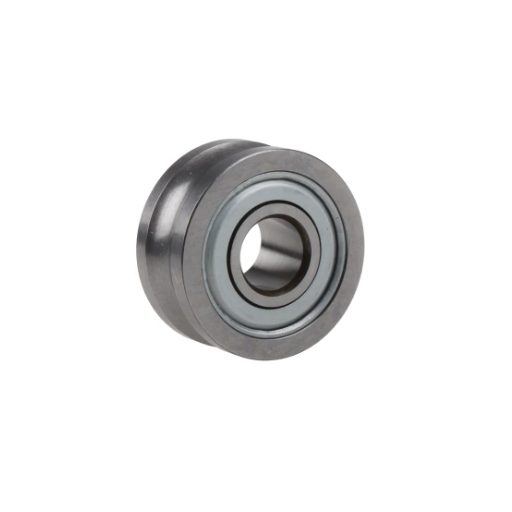
Use in Automotive Engines
Roller cam followers are widely used in automotive engines to enhance performance, efficiency, and reliability. The main purpose is to reduce friction in the valve actuation systems. Roller cam followers replace the sliding contact with a rolling contact. This reduction in friction and wear is paramount in the modern internal combustion engine, where every effort is made to minimize parasitic losses for improving fuel efficiency and to meet stringent emissions regulations.
Also, roller cam followers enable the timely opening and closing of the valves, resulting in engines that perform optimally at various speed ranges. In such cases, for example, in high-revving engines, their solid build and design against material fatigue ensure that such cam followers always perform under severe load with high reliability. With their incorporation alongside the use of advanced materials such as hardened steel or ceramic-coated surfaces, their life span can be extended forever, thereby prolonging the life of the engine components themselves. With such systematic usages of roller cam followers in engines, statistical studies have proven to show an increase in efficiency of almost 5% in some engine configurations.
Their integration within automotive engines is a testament to how the industry is rapidly evolving toward solutions that are high-performance yet environmentally conscious.
Industrial Machinery Applications
Generally, roller cam followers give industrial machines enhanced symmetry, proven reliability, and great efficiency in converting mechanical actions. They are engineered to support significant loads and are used in diverse branches of industry where there are high load demands and friction needs to be minimized. Below we offer five specific applications for these follower rollers in the industries:
- Robotic Arms in Manufacturing: Roller cam followers in a robotic arm setup allow smooth and precise motion during repetitive operations on assembly lines. The low-friction cart-like system allows less wear and tear, with performance capability held constant even after long hours of use. A study mentions an increase of nearly 20% in equipment uptime in robotics systems integrated with roller cam followers.
- CNC Machines: CNC Machines use roller cam followers for accurate movement along several axes. The components guarantee the utmost precision in positioning required for working on intricate designs. Records state that CNC systems with roller cam followers provide better cutting accuracy, which, in some applications, is below the tolerance of 0.01 mm.
- Material Handling Equipment: Roller cam followers are highly advantageous in material handling systems like conveyor belts and cranes because of their load-bearing capacity. Higher durability of machines means less downtime. Field data shows a maximum of 15% increased operating life in equipment using high-grade rollers.
- Textile Machinery: Roller cam followers find their use in textile production by ensuring the smooth operation of looms and spinning machines. These components withstand continuous high-speed motion and also reduce the operational noise level substantially, improving productivity in textile plants by almost 10%.
- Packaging Systems: Roller cam followers aid precise synchronization of moving parts in high-speed packaging machinery, such as that used in food and beverage industries. Their dependability at higher cycle rates inhibits bottling up, enhancing throughput. In packaging facilities, data showed that employing advanced roller cam follower technology had shortened maintenance intervals by 25%.
Roller cam followers in these applications show exactly why they become major candidates in ensuring the operational efficiency and reliability of a range of industries. Being tough, in their construction, reducing mechanical stress, they contribute largely to the better performance, hence the cost-effectiveness of industrial machinery.
Robotics and Automated Systems
Robotic and automated systems assume crucial control in the modern industrial processes, thereby achieving nearly perfect efficiency, accuracy, and scalability. These systems greatly rely on the mechanical design of roller cam followers for their smooth running, especially in high-load scenarios. The increased incorporation of robotics into manufacturing, warehousing, and healthcare creates demands for components able to withstand repeated motion, high speed, and varying loads without compromising durability.
Recent data reveal robotic technologies have achieved major leaps, including AI-driven control systems and actuator designs, thus expanding automation towards complex tasks. Optimization of mechanical parts, therefore, makes high-load robotic arms in auto assembly lines notably much more energy-efficient and long-lived, reducing unplanned downtime for production by about 15%.
Furthermore, automated systems of today derive benefits from the application of condition monitoring algorithms based on the concepts of sensors and predictive analytics. These systems monitor and continuously generate performance data, allowing for advanced and proactive warnings of any component degradation or inefficiency, such as in the case of cam followers, thereby reducing unplanned maintenance and making the systems more dependable. The pocket of innovations in mechanical design backed by data-driven processes offers great possibilities in defining the future in the field of robotics and automation.
Maintenance Tips for Roller Cam Followers
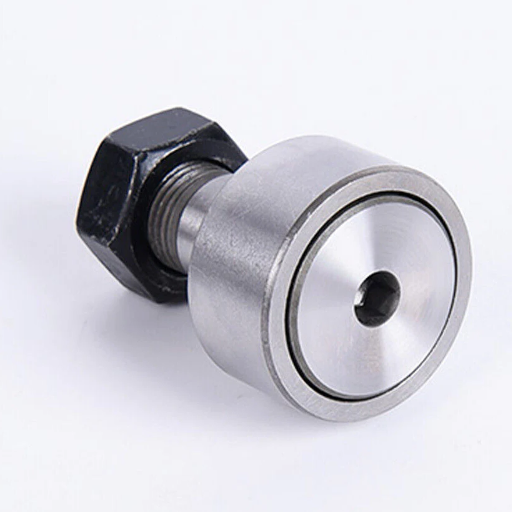
Regular Inspection and Cleaning
For the best performance and longer life, roller cam followers require systematic inspection and cleaning at regular intervals. During the inspection, operators visually analyze each part for any signs of wear, pitting, or corrosion, an indication that deterioration may be at its premature stage. Dial indicators or other calibrated instruments should be used during precise measurement to check whether the alignment and radial clearance of the cam follower are kept within the tolerance specifications set by the manufacturer. Unusual noise or vibration during normal operation may also prove to be an effective indicator of the onset of problems.
Cleaning is one of the core elements of essential preventive maintenance to keep contamination out of failure modes. The cleaning is meant to dislodge any debris, dirt, or grease that might obstruct the rolling elements or raceway surfaces. Cleaning can be carried out using lint-free cloths, compressed air, or sometimes specially formulated cleaning agents free of corrosive resin designed for mechanical components. It is imperative never to wash with high-pressure water unless explicitly allowed because the ingress of water or cleaning fluid into the bearing housing will destroy lubrication and result in excessive wear.
Cleaning must be followed by proper relubrication for efficient operation of the cam follower. Lubricants other than those recommended by the manufacturer must not be put into use, as the use of unsuitable lubrication compounds, either with incorrect viscosity or additive composition, causes premature failure or inefficient operation. The maintenance practice can be improved even further if modern lubrication systems capable of real-time monitoring deliver just the right amount of lubricant and, at the same time, ascertain the system condition via built-in sensors. When coupled with the inspection and cleaning methodology described above, such advanced data analytics integration firmly underpins a predictive maintenance regime, thus hugely reducing the risk of mechanical downtime.
Proper Lubrication Techniques
Proper methods of lubrication are needed to ensure the heavy machinery’s performance and extended life. It is systematic in that the approach starts with choosing the lubricant type depending on the operating conditions: temperature, load, or exposure to the atmosphere. Common lubricant types could include mineral oils, synthetic lubricants, and semi-synthetic blends, each fit for a different machinery requirement. Viscosity, thermal stability, and anti-wear properties should be considered to get a perfect match with the system conditions.
Applying the lubricant can be done through manual methods, centralized lubrication systems, or automated delivery methods. Automated lubrication systems, such as the single-line, dual-line, or circulating oil systems, allow very accurate dispensing of lubricant, ensuring that critical parts receive a precise amount of lubricant consistently. This eliminates the scope for human errors, along with the risks associated with over- or under-lubrication.
Frequency and intervals depend on the duty cycle of the equipment and specifications provided by the manufacturer. By monitoring the lubricant condition using a spectrochemical method or ferrography, one can quickly reveal contaminants like particulate debris, water ingress, or oxidation by-products. The practice will ensure that lubrication remains a proactive measure against mechanical wear and unplanned maintenance events instead of a reactive one. With a working set of methods combined with modern techniques, organizations can improve the bottom-line effectiveness of operations while eliminating a greater share of risks to equipment reliability.
Signs of Wear and When to Replace
Proper equipment maintenance follows from identifying the early signs of wear with the ultimate aim of preventing catastrophic failures. The primary indicator of wear includes vibrations while in operation. Increased vibrations may be warning signals for misalignment, imbalance, or the deterioration of internal components, such as bearing failures. Commonly measured or quantified through the use of vibration analysis, where an accelerometer picks up anomalies in the frequency patterns, another great indicator would be an increase in temperature while the machine is in operation. Such temperature increases may be traced back to friction resulting from wear in the components or, consequently, secondary thereof poor lubrication. Thermal data can be monitored regularly via an infrared thermographic system to classify a hotspot before irreversible damage.
Apart from these, visual inspections often bring a form of indications, and routine condition monitoring for any wear, including pitting, scoring, or abrasion of metal surfaces. These usually point towards inadequate lubrication, contamination, and loads exceeding design limits. Oil analysis is a serious step for determining tiny metal particles that come out from equipment wear. For example, the increased presence of ferrous debris usually points toward a failure of steel parts, whereas non-ferrous types, such as copper or aluminum, could indicate problems in bushings or housings. Trending through a series of oil samples allows the maintenance team to tackle wear before any major failure of the involved component occurs.
For a decision of asset or component replacement, some performance criteria and cost-benefit approaches are considered. Given historical data, operational conditions, and rates of degradation, those predictive maintenance models, that is, models with artificial intelligence and IoT sensors, output the remaining useful life (RUL) of a machine. Replacement should be pushed when the repair cost exceeds the depreciated value of the asset or once the operational inefficiency starts affecting productivity. Thus, by combining advanced diagnostics with prescriptive maintenance solutions, organizations can reduce downtime to the barest minimum, maximize the life cycle of equipment, and fine-tune overall performance.
Design Variations of Roller Cam Followers
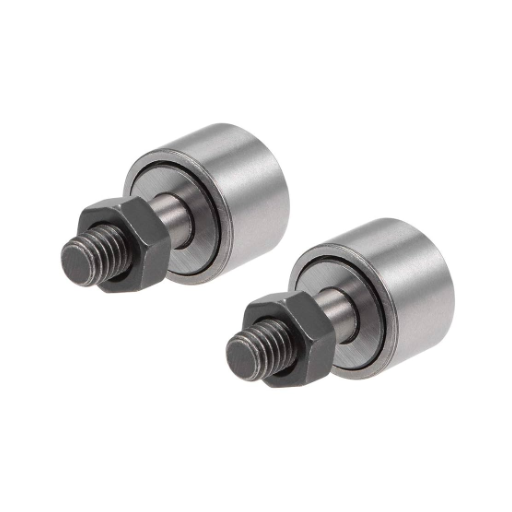
Material Choices and Their Impact on Performance
The materials utilized in roller cam followers greatly influence their mechanical efficiency, finish, lifespan, and operational efficiency. Here are five critical kinds of materials used in making roller cam followers, along with an in-depth description of their properties and performance characteristics:
- High-Carbon Steel: High-carbon steels are extensively applied due to their hardness and wear resistance imparted by heat treatment. These steels possess tensile strengths in the range of 850-1000 MPa and are considered suitable for use in applications where highly durable products are needed against repetitive stress. However, being highly prone to corrosion, it requires some additional surface treatment such as plating or coating.
- Alloy Steel: Alloy steels, such as Cr-Mo steels, improve the toughness, machinability, and resistance to impact of high-carbon steels. Higher loads and working temperatures are borne by these materials, with tensile strengths in the range of 900-1200 MPa, thus used for heavy-load applications.
- Stainless Steel: Stainless steel resists corrosion and finds its application in an environment where moisture or chemical substances would be encountered. Types such as 440C stainless steel provide a compromise between hardness (58-60 HRC) and corrosion resistance, though at a higher price than other alternatives.
- Tool Steel: Tool steels such as D2 or A2 are chosen for excellent wear resistance and the ability to maintain a keen edge in high-pressure work. They are mostly used in precision work but require surface finishing, machining, and heat treatment to achieve peak performance.
- Composite Materials: Advanced composites, like fiber-reinforced polymers or metal-matrix composites, are increasingly favored for their lightweight yet robust characteristics. Although they have less tensile strength compared to metals (~400-700 MPa), the advantages in light weight and very good fatigue resistance make them useful in high-speed or low-load operations.
Each material posed in the foregoing discussion comes with its unique set of advantages and disadvantages. Hence, it is paramount that application-specific criteria be carefully taken into consideration, including load, speed, environmental aspects, and economic limitations, that would always guarantee the best roller cam followers’ performance and sustainability.
Innovations in Roller Cam Follower Design
Over recent years, the engineering of roller cam followers has seen new dimensions to ensure efficiency, durability, and very precise service in the harsh working applications. One such development has been that of modern materials-capable hybrid ceramic bearings that facilitate high wear resistance with low frictional coefficients and thermal stability in protecting the cam followers and thus elevating their life span and firm operational reliability. On important surfaces, coating systems like DLC (Diamond-Like Carbon) or PVD (Physical Vapor Deposition) are increasingly being employed to drastically reduce friction losses and resist corrosion in chemically aggressive environments.
Another development has been lubrication technology. New self-lubricating systems have been introduced to further reduce maintenance and ensure consistent performance in conditions tested by high load or speed. These systems make use of designed grease reservoirs or advanced capillary oil feed systems to guarantee lubrication at its best, also during prolonged operations.
Further refinements have been achieved in cam followers through precision manufacturing techniques, CNC machining coupled with AI-led quality control systems, all used to optimize geometry as well as surface finish of the cam followers, giving reduced tolerance stacking, better load distribution, and less vibration during operation. Further advances involve IoT-enabled sensors in roller cam followers that impart real-time monitoring of operational such as load, temperature, and lubrication state. Real-time data observation leads to maximizing operational uptime and enhances predictive maintenance to reduce sudden breakdowns.
Together, these innovations represent the desire of the community to push beyond the frontiers of traditional mechanical design to present solutions for very specialized and complex applications where performance, efficiency, and longevity are paramount.
Frequently Asked Questions (FAQ)
Q: What is a roller cam follower, and how does it work?
A: A roller cam follower is a type of mechanical component that uses a roller to minimize friction and wear during the rotation of a camshaft. It is designed to follow the contour of a cam profile, effectively transferring motion and power while supporting axial loads. The roller allows for smoother operation compared to standard flat followers, leading to increased efficiency in various applications.
Q: What are the advantages of using roller cam followers over standard followers?
A: Roller cam followers offer several advantages, including reduced friction, lower wear rates, and improved performance under high axial loads. The roller bearings in these followers provide a larger contact area, which helps distribute forces more evenly and reduces distortion during operation. This results in longer service life and better overall efficiency.
Q: How do roller follower bearings affect performance?
A: Roller follower bearings play a crucial role in the performance of roller cam followers. They enable smooth rotation and support high loads, which enhances the efficiency of the system. The design of these bearings allows for minimal space requirements while maintaining strength, making them ideal for applications with limited room for components.
Q: Can roller cam followers be used in high-speed applications?
A: Yes, roller cam followers are well-suited for high-speed applications due to their low friction characteristics and ability to handle large axial loads. The design helps maintain stability and performance even at elevated speeds, which is essential in industries like automotive and manufacturing where precision and reliability are critical.
Q: What factors should be considered when selecting roller cam followers?
A: When selecting roller cam followers, it’s important to consider factors such as load capacity, speed of operation, space constraints, and the specific cam profile they will be used with. Additionally, evaluating the materials used in the construction of the follower and bearings can impact durability and performance over time.
Q: How does the geometry of roller cam followers influence their operation?
A: The geometry of roller cam followers significantly influences their operation by determining how they interact with the camshaft. A well-designed roller profile ensures optimal contact with the cam surface, which minimizes wear and enhances power transfer. Variations in thickness and diameter can also affect the follower’s ability to handle loads and maintain stability during rotation.
Q: What maintenance practices are recommended for roller cam followers?
A: Regular maintenance of roller cam followers involves checking for wear and tear, ensuring proper lubrication, and inspecting the roller bearings for damage. Keeping the components clean and well-lubricated will help prevent distortion and prolong service life. It’s also essential to monitor for any signs of misalignment or skew, which can affect performance.
Q: Are there any limitations to using roller cam followers?
A: While roller cam followers offer many benefits, there are limitations to consider. They may require precise alignment to function effectively, and improper installation can lead to increased wear or failure. Additionally, they may not be suitable for applications with extreme space constraints or where high levels of contamination are present, as this can compromise their performance.
UCTH213-40J-300 with Setscrew(inch)
CNSORDERNO: Normal-duty(2)
TOGN: UCTH213-40J-300
SDI: B-R1/8
SD: 2 1/2
UCTH212-39J-300 with Setscrew(inch)
CNSORDERNO: Normal-duty(2)
TOGN: UCTH212-39J-300
SDI: B-R1/8
SD: 2 7/16
UCTH212-38J-300 with Setscrew(inch)
CNSORDERNO: Normal-duty(2)
TOGN: UCTH212-38J-300
SDI: B-R1/8
SD: 2 3/8
UCTH212-36J-300 with Setscrew(inch)
CNSORDERNO: Normal-duty(2)
TOGN: UCTH212-36J-300
SDI: B-R1/8
SD: 2 1/4
UCTH211-35J-300 with Setscrew(inch)
CNSORDERNO: Normal-duty(2)
TOGN: UCTH211-35J-300
SDI: B-R1/8
SD: 2 3/16
UCTH211-34J-300 with Setscrew(inch)
CNSORDERNO: Normal-duty(2)
TOGN: UCTH211-34J-300
SDI: B-R1/8
SD: 2 1/8









